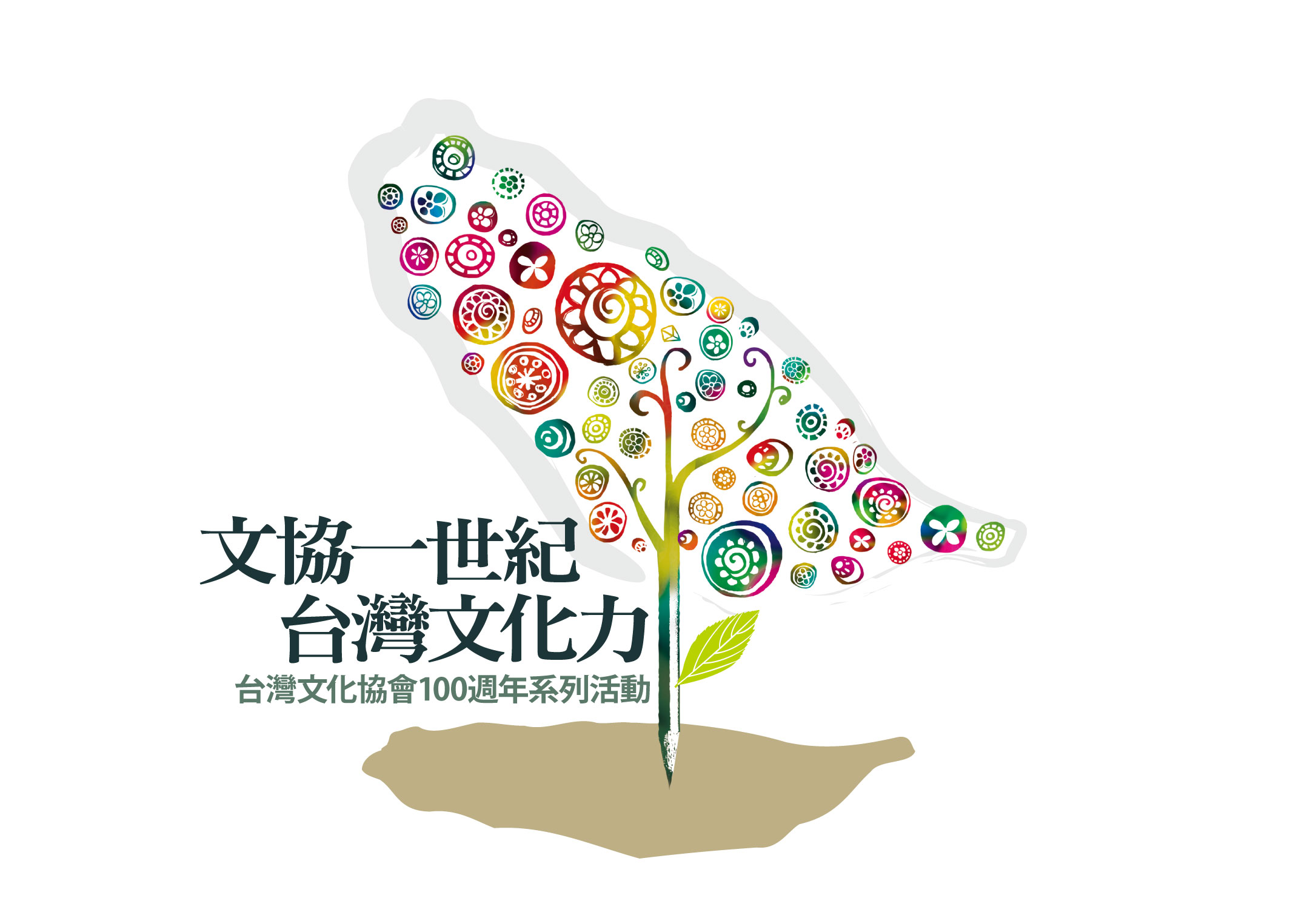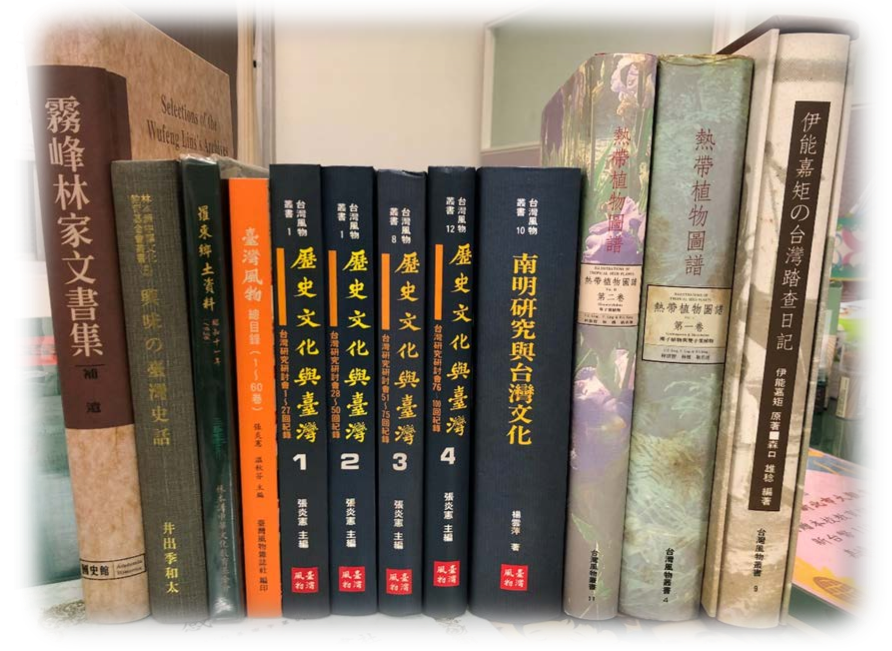
史詩未成‧唯待後續:十二年前鄭南榕的那把火
An epic poem not yet finished:
Twelve years after Cheng Nan-jung’s self-immolation
胡慧玲/Hu Hui-lin
(陳文成博士紀念基金會總幹事/Secretary General, Dr. Chen Wen-chen Memorial Foundation)
2001-04-16  Cheng Nan-jung founded Freedom Era Weeklyin 1984. It was banned countless times,but still managed to come out each week.
Cheng Nan-jung founded Freedom Era Weeklyin 1984. It was banned countless times,but still managed to come out each week.
「鄭南榕的自焚事件,是台灣政治運動的分水嶺。」國策顧問姚嘉文如是說。在言論封閉的一九八○年代裡,鄭南榕創辦了《自由時代週刊》,並結合運動以密集攻勢突破官方四大禁忌:蔣家神話、軍方弊端、二二八、台灣獨立;而他的死,更使台灣的政治運動由國會體制改革的層次躍入國家認同的層次。四月七日是鄭南榕逝世十二年紀念日,因此本週特別邀請陳文成博士紀念基金會總幹事胡慧玲(前《自由時代週刊》主編)執筆,談談這位台灣政治史上,先知先覺的行動家。
”The Cheng Nan-jung self-immolation incidentis a watershed in Taiwan’s political movement.”So says National Policy Advisor Yao Chia-wen.In the 1980s, when expression of politicalviews was banned, Cheng Nan-jung founded theFreedom Era Weekly, and combined activism witha highly-concentrated attack to break the fourgreat taboos of the authorities: the myth ofthe Chiang family, military abuses, the 228Incident and Taiwan Independence. His deathpushed Taiwan’s political movements from thelevel of parliamentary reform to a new levelof national identification. Because April 7 isthe twelfth anniversary of Cheng Nan-jung’sdeath, this week we have invited Hu Hui-lin,secretary general of the Dr. Chen Wen-chenMemorial Foundation, and former editor of FreedomEra Weekly, to write about this prescientactivist from Taiwan’s political history.
以血肉之軀燃燒民主自由之火
1989年4月7日,自由時代週刊總編輯鄭南榕自囚的第71天。上午八點多,國民黨重兵包圍雜誌社,破門而入之際,鄭南榕轉身走進總編輯室,反鎖房門,引火自焚。那把果決的柴火,那道猛然的火勢,燒出了台灣近世紀來前所未有的局面,譜下了波瀾壯闊的史詩。
A fire of freedom and democracy kindled with fleshand blood
April 7 1989 was the 71st day of self-imprisonmentfor Freedom Era Weekly’s editor-in-chief, ChengNan-jung. Some time after 8 a.m., large numbersof KMT troops surrounded the magazine’s office,broke down the door and entered. Cheng Nan-jungturned around and went into the editor-in-chief’soffice, locked the door behind him, and set himselfon fire. That firm and resolute matchstick, thatsudden burst of flames created a situation unknownin recent Taiwanese history, and composed an epicpoem on a vast scale.
言論封閉的時代裡,主張台獨的外省第二代
鄭南榕,父親來自中國福州,母親係基隆人。通稱「外省人第二代」的他,1947年9月12日出生於台北市漢口街,差點未出生就成了二二八事件的冤魂。台灣近代史上最慘烈的大屠殺,娘胎裡為他烙了印記,也標識了他人生的方向。
In the days when expression of political viewswas banned, he was a second-generation mainlanderwho advocated Taiwan Independence
Cheng Nan-jung’s father came from Fuzhou in China,his mother was from Keelung. Known as a “secondgeneration mainlander,” he was born in HankouStreet in Taipei on September 12, 1947, beforehe was born, he almost became one of the “unluckyghosts.” The most disastrous massacre in Taiwan’srecent history branded its stamp on him as he layin his mother’s womb, and marked the direction hislife was to take.
日後鄭南榕在他第一份求職履歷表上寫著:「我出生在二二八事件那一年,那事件帶給我終生的困擾。…我們是在鄰居的保護下,才在台灣人對外省人的報復浪潮裡,免於受害。」他自幼思索此問題至成年,白色恐怖時代主動記錄於自己的人生公文書,後來因之參與政治,鼓動風潮,追求言論自由,公開主張台灣獨立,並不惜以身殉之。
Later, on his first job-seeking resume, ChengNan-jung was to write: “I was born the year ofthe 228 Incident, and this incident has tormentedme throughout my life…Only because we wereprotected by our neighbors were we mainlanderssafe from the wave of retaliation from theTaiwanese.” From childhood he thought deeplyabout this question, and he freely recorded theperiod of White Terror in the documents he wroteabout his life. Later on, because of thisexperience, he became involved in politics,stirred up agitation and sought freedom of speech,became an open advocate of Taiwan Independence,and thought nothing of dying for his beliefs.
鄭南榕畢業於宜蘭初中、建國中學;先後就學於成功大學工學院、輔仁大學哲學系、台大哲學系,自詡「我是第一流的行動思想家,為什麼要做第三流的工程師?」拒修國父思想課程,也放棄了台大畢業証書。他說:「我是個一流主義者,對人生的不清不楚,深覺痛苦。」
Cheng Nan-jung graduated from Ilan Middle School andChien Kuo High School. He enrolled successively atNational Cheng Kung University’s college of engineering,Fu Jen Catholic University’s philosophy department andNational Taiwan University’s philosophy department. Heboasted that he was “a first-rate activist thinker, sowhy should I be a third-rate engineer?” He refused totake the classes on Sun Yat-sen Thought, and handedback his Taiwan University graduation certificate. Hesaid “I’m a first-rate-ist, I don’t understand life,and I find this very hard indeed.”
離開台大校園的他,自覺是個煥然一新的人,他說:「我強烈感受到台灣不公不義的現象,也明確下了堅持本土化思想的決心。」
After leaving Taiwan University, he became awarethat he had become a completely new person. Hesaid “I was profoundly affected by the phenomenonof injustice in Taiwan, and I made an unequivocalresolution to be true to the ideas ofTaiwanization.
1972年2月,鄭南榕與輔大同學葉菊蘭結婚,10月退伍,進入商場。他一心一意想辦雜誌,他說:「像我這種思想訓練深厚的人,辦雜誌是實踐信仰最適當的方式。」
In February 1972, Cheng Nan-jung married YehChu-lan, who had been a fellow student at FuJen. He was demobbed in October that year,and went into business. He was bent onproducing a magazine, and he said: “For adeep and disciplined a thinker like me,producing a magazine is the best way to putmy beliefs into practice.”
結合雜誌與運動兩大戰場,突破官方四大禁忌
1984年3 月,他創辦《自由時代週刊》,標榜「爭取百分之百的言論自由」。鄭南榕登記了18張雜誌執照,做為被國民黨查禁、停刊時的備胎;他說:「被抓、被殺都不怕,簡而言之,一路奮鬥到底。」清清楚楚的方法和目標,他實踐到生命的最後一刻。
Combining the two battlefields of journalism andactivism, and breaking the four great taboos ofthe authorities
In March 1984, he founded Freedom Era Weekly, andboasted that “[it was] fighting for 100 percentfreedom of speech.” Cheng Nan-jung registered 18different magazine licenses, as “spare tires” foruse when the KMT banned the magazine and suspendedpublication. He said “I’m not scared of arrest norof being killed, basically, I’ll fight them to thevery end.”

Cheng Nan-jung set himself on fire inthe magazine’s office. His wife, YehChu-lan, covers his remains with a flag.
自由時代系列週刊辦了5 年8 個月,出版302 期,直到他死後半年才結束。其間,1984年年底,江南命案發生後,雜誌轉載《蔣經國傳》,多次公開蔣經國的病情,揭發軍方黑幕和弊端,打破蔣家神化權威,壓制軍人干政之氣勢,因之創下被查禁和停刊數最多的記錄。1986年6月2日,鄭南榕被羅織入罪,未判刑先逮捕,罪名是「違反選罷法」,實則是鄭南榕在爭取言論自由之外,繼之以發起街頭運動,向政治禁忌宣戰。
Freedom Era Weekly ran for five years and eightmonths, and 302 issues. It only folded six monthsafter Cheng’s death. During that time, at the endof 1984, after the Henry Liu murder, the magazineprinted Liu’s Biography of Chiang Ching-kuo, madepublic Chiang Ching Kuo’s medical condition onmany occasions, exposed the shady dealings andabuses of the military, broke through the deifiedauthority of the Chiang family and put pressure onthe interference of the military in politics. Asa result, the magazine was suppressed andpublication suspended a record-breaking number oftimes. On June 2, 1986, Cheng Nan-jung was framed,and arrested without sentence. His crime was”violating the Public Officials Election and RecallLaw,” but actually, apart from fighting for freedomof speech, Cheng was continually declaring war onpolitical taboos with his organization of streetactivism.
1986年,他鼓吹黨外組黨,率先加入在美國成立的台灣民主黨,成為島內第一號黨員;隨後發起519 綠色行動,抗議長達39年的戒嚴統治年,他被捕後,雜誌社如常運作,定期出刊;隔年1 月24日出獄,他未曾停止他的腳步,彷彿自知活著的歲月所餘不多。出獄後第一天,也就是二二八事件四十週年屆臨前,他向台灣最深沈的政治禁忌挑戰,邀集陳永興、李勝雄等人,於2月4日創辦228 和平日促進會,在全台各地遊行演講,要求查明真相,平反冤屈,與族群和解。
In 1986, he agitated for the organizations ofpolitical parties outside the KMT, and was amongthe first to join in the establishment of theTaiwan Democracy Party in the U.S., and becamethe first party member on the island. Soon afterhe started the 519 Green Movement. On January 24,1987, he was released, and he never let up for amoment, it was as if he knew that he didn’t havemuch time left. The first day after he left prison,just before the 40th anniversary of the 228Incident, he challenged Taiwan’s most deeply-heldpolitical taboo, and invited people including ChenYung-hsing and Lee Sheng-hsiung [Stephen Lee] to ameeting on February 4 to found the 228 Peace DayAssociation. They held demonstrations and gavespeeches all over Taiwan, demanding an investigationto find out the truth, redress of injustice, andreconciliation among the different ethnic groups.
4 月16日,在演講會上,鄭南榕向另一個絕對的政治禁忌挑戰,他說:「我是鄭南榕,我主張台灣獨立。」他以身為國民黨統治下第一個公然鼓吹台灣獨立之人而自傲。一次又一次,在每一個公開演講場合,在萬千群眾面前,他總是以這句話當開場白:「我是一個外省囝仔,我主張台灣獨立。」
On April 16, at a speaker meeting, Cheng Nan-jungchallenged another absolute political taboo. Hesaid “I am Cheng Nan-jug and I advocate TaiwanIndependence.” He was the first person to publiclycome forward and proudly advocate TaiwanIndependence. Again and again, on every publicspeaking occasion, before crowds of thousands, hewould repeat this sentence and declare openly andpublicly: “I am the ‘gin-ah’ [Taiwanese for’child’] of a mainlander, and I advocate TaiwanIndependence.”
1987年9 月起,他策劃「蔡許台獨案聲援活動」,繼之推動「新國家運動」,全台行軍40天。1988年7 月,他赴美國和日本,首度結識海外獨立運動份子,取得許世楷的〈台灣共和國憲法草案〉,返台後,隨即在雜誌第254 期刊登全文。為此,1989年1 月21日,高檢處發出「鄭南榕涉嫌叛亂」的第一張傳票。1 月27日,他公開宣稱:「國民黨只能抓到我的屍體,不能抓到我的人。」
Starting in September 1987, he made plans for”Activities to express support for the Tsai-HsuTaiwan Independence Case,” and continued topromote the “New Nation Movement,” a march aroundthe whole of Taiwan that would last for 40 days.He acquired Hsu Shih-kai’s “Draft for a TaiwanRepublic Constitution”, and after his return toTaiwan, published the entire text in issue no. 254of the magazine. It was for this reason that thePublic Prosecutor’s Office of the Taiwan High Courtissued preliminary summons for “Cheng Nan-jungbeing under suspicious of sedition” on January 21,1989. On January 27, he made a public declaration:”The KMT will only take my body, they will nevertake me alive.”
殉道者的骨灰成為民主與希望的種子
他再也沒有踏出室外一步,再也沒有曬過太陽,拂過春風。自囚期間,他曾以一篇訪問稿〈獨立,是台灣的唯一活路──鄭南榕談台灣新憲法涉嫌叛亂案〉明志,編按首句引聖經「他不是那光,乃是要為光做見証。那光是真光,照亮一切世上的人。」鄭南榕已準備殉道。
The ashes of one who laid down his life for hisprinciples become the seeds of democracy and hope
He never again set foot outside his office. Henever again felt the sun on his face, or the touchof the spring breezes. During his period ofself-confinement, he gave an interview, entitled”Independence is the only way out for Taiwan — ChenNan-jung talks about a new constitution for Taiwanand is under suspicion of sedition,” and quoted fromthe Bible: “He was not that Light, but was sent tobear witness of that Light. That was the true Light,which lighteth every man that cometh into the world.”Cheng Nan-jung was already prepared to die for thecause.

Cheng Nan-jung launches the 40-day marcharound the island by the New NationMovement, 1988.
1989年4月7日清晨,國民黨重兵壓境、強行攻打雜誌社,鄭南榕以一把火,和全焦的屍體,向世人証實他高潔的靈魂,向世人表達他對這片土地的愛戀。
In the early hours of April 7, 1989, large numbersof KMT troops surrounded the area and made anattack by force on the magazine offices. ChengNan-jung set himself on fire, and with his charredremains he made his noble and virtuous soul witnessto the people of the world, and showed them hislove for this land.
5 月19日,這個鄭南榕所發動的第一個政治運動的紀念日,四、五萬人冒著微雨,參加出殯式。綿延數公里的行列,從中山南路右轉凱達格蘭大道時,受阻於公園路前的鐵絲蛇籠和憲警封鎖線。詹益樺飛奔前往,自焚於鐵絲網上。
On May 19, the first memorial day for the politicalmovement started by Cheng Nan-jung, 40 to 50,000people braved light rain to attend his funeralprocession. The parade stretched for severalkilometers, and when it turned right from ChungshanSouth Road into Ketegelan Boulevard, it was blockedin front of Kungyuan Road by steel wire barricadesand a military police cordon. Chan Yi-hua dashedforward and set himself on fire in front of thewire barriers.
1989年4月7日之後,海外黑名單人士紛紛闖關回台,帶動此後兩年的返鄉熱潮,並開啟以台灣為主體的獨立運動;人民力量興起,呈現於三月學運和反軍人干政,以及日後的100 行動聯盟和廢除刑一百條…。1990年4月7日,鄭南榕的骨灰以氣球昇空,遍灑各地。
After April 7, 1989, the figures on the blacklistwho had gone overseas came back to Taiwan indroves, bringing a tide of returnees over the nexttwo years, and opened up the independence movementwhich took Taiwan as its subject. People powertook off, and manifested itself in movements suchas the March students’ movement and the activismagainst military interference in politics, andlater on in the Action 100 Alliance to get rid ofArticle 100… On April 7, 1990, Cheng Nan-jung’sashes were scattered by balloon.
愛比死更堅強--遺孀葉菊蘭在民主之路上繼續奮鬥
葉菊蘭於鄭南榕過世之後,棄商從政,四度當選立法委員,2000年5 月20日,新政府成立後,並出任交通部長。她始終認為鄭南榕是公共財,因此於事件十年後捐出雜誌社房產和捐款,組成鄭南榕基金會,將此公共財永續滋息。
Love is stronger than death – his widow, YehChu-lan, continues the battle on the road todemocracy
After Cheng Nan-jung’s death, Yeh Chu-lanabandoned business for politics, and servedfour terms as legislator. On May 20, 2000,when the new government was set up, she tookup the post of Minister of Transportation andCommunications. All along, she has taken theview that Cheng Nan-jung is public property,and consequently, 10 years after the incident,she donated the magazine’s offices and alsodonated funds to set up the Cheng LibertyFoundation so that this “public property” cancontinue in perpetuity.
位於台北市中山國中旁幽靜巷內的鄭南榕紀念會館,是1984年3 月《自由時代週刊》創辦之地,也是1989年4月7日鄭南榕自焚之處。鄭南榕的生與死,在台灣播下自由的種籽。鄭南榕基金會舉辦中的「自由之路電影欣賞會」、規劃中的鄭南榕自由獎、讀書會,也是以「自由」為中心的思想和實踐。
Situated in a quiet and peaceful lane near toChung Shan Middle School in Taipei City, this isthe place where Freedom Era Weekly was founded inMarch 1984, and also the place where Cheng Nan-jungset himself on fire on April 7, 1989. Cheng, inboth life and death, sowed the seeds of freedom inTaiwan. The Cheng Liberty Foundation is organizinga “Freedom Road Film Festival,” and has plans fora Cheng Nan-jung Liberty Prize, a study group, andtakes liberal thought and liberty in practice asits core.
共同續寫哲學家未完成的民主建國史詩
鄭南榕雖是「外省人第二代」,卻始終認定台灣為家鄉。他說:「我們是小國小民,但我們是好國好民。」他曾於筆記本上寫著:「當哲學家被處死之時,山河都將流淚。」彷彿預示了身後的景象。然史詩未成,唯待後續。
Coming together to finish the epic poem of ademocratic country which the philosopher leftunfinished
Although Cheng Nan-jung was a “second-generationmainlander,” he always took it for granted that Taiwanwas his homeland. He said: “We are a small people in asmall country, but we are a good people, and in a goodcountry.” In his notebook, he once wrote: “When aphilosopher is put to death, the mountains and the riversall shed tears.” It’s as if he had an intuition of whatwould become of him. The epic poem is not yet finished,it just awaits completion.
Edited by Hsu, Shiou-Iuan/ translated by Elizabeth Hoile
(許琇媛編輯/何麗薩翻譯)









